Technology
Welcome to TechCrunch2019 Holiday Gift Guide! Need help with gift ideas? We&re here to help! We&ll be rolling out gift guides from now through the end of December, so check back regularly.
We&ve refreshed our annual STEM toy gift guide with the latest wares clamoring to entice and inspire kids with coding tricks and electronic wizardry. Yes folks! Another year, another clutch of shiny gizmos making grand claims of computing smarts in child-friendly packaging.
But lean in to this market and you&ll find a number of STEM toy makers have winked out of existence since this time last year, or else been folded into others& empires. Such as littleBits selling to Sphero this fall, or Root Robotics being picked up by robot vac giant iRobot in June.
Some of the remaining indie players are leaning heavily on IP licensing deals from big brands (e.g Kanoco-branded Disney kit) as a tactic to grab attention. Others are concentrating their effort on selling direct to schools (e.g. Sphero, after a pivot last year — now with an expanded educational toolbox having picked up littleBits). Ozobot is another thatbeen dialing up its focus on classrooms. Though, as we&ve reported, selling complex STEM learning devices to schools isn&t always easy. More consolidation and exits seem highly likely.
Itperhaps also a sign of tricky times in the kid-tech/edtech category that Kano, one of the earliest of the alternative STEM computer makers, has jumped into bed with tech giant Microsoft too — selling its first Windows powered PC this year.
Itclear that some of the experimental energy which fired up the category a few years ago has faded, as sales and outcomes haven&t gone the distance or lived up to the hype. Kids are fickle customers, as parents know. The market has responded by shaking out a bit. It also means some of whatoffered is starting to feel a bit formulaic and same-y. (And, well, Disney.)
Still, kids of all ages remain roundly spoilt for techie stuff to interact with. Not least because itnever been easier for toymakers to bolt-on a bit of drag-and-drop in-app coding to give their plaything a STEM dimension. Mainstream giants like LEGO are also staying the course to try and grab a bigger chunk of the action. Generally you&ll find products with more polish than in years past, if not always as original and ambitious.
Italso fair to say that promises of clever gadgets to power a kids& coding revolution are looking rather less pristine than they used to after all the unboxing and, er, abandoning. Reality bytes, you could say.
Affordable smartphones and tablets maintain their competitive squeeze at the top of the category. They can be a more versatile option than most STEM gizmos, though rising concern about childrenscreen time may push parents to seek out physical and tactile alternatives. Meanwhile, a mobile device is typically required to bring a STEM toy to life — as most (though not all) are essentially Bluetooth add-ons.
All that said there are still original and inspiring gifts to be had — and itgood to see more focus on teaching creative skills, not only tech and engineering. Of course italways a case of horses for courses in this category. If your child won&t touch anything unless itwearing a Frozen princess dress/Star Wars cloak then you&ll be resigned to shelling out for the usual merch. May the tech force be with you as you search!
Adafruit
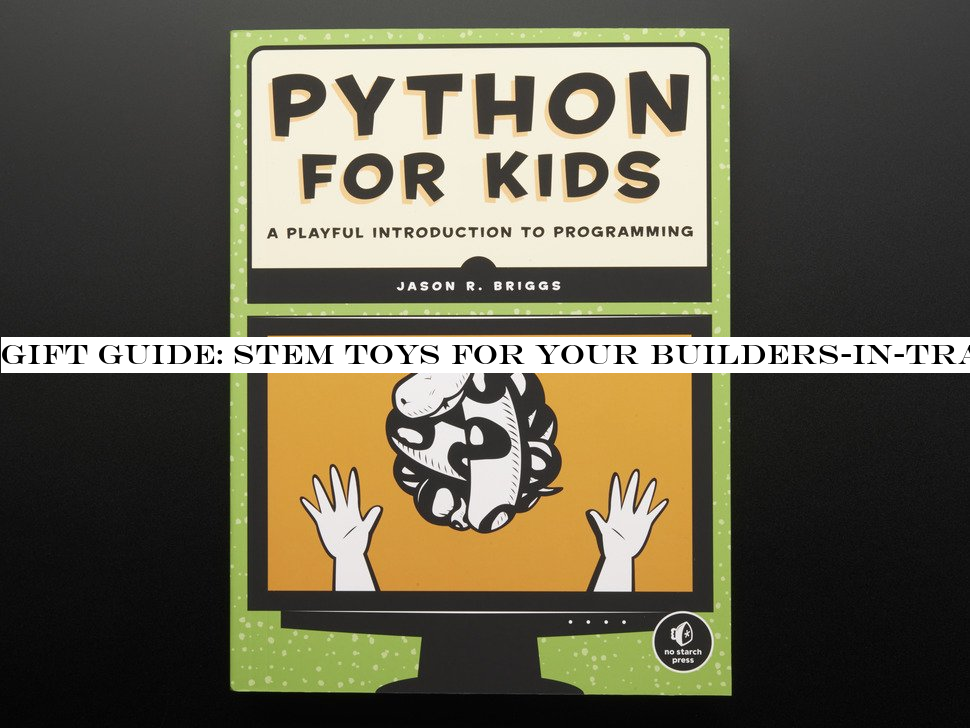
Product: Python for Kids Price: $35 Age: 10+
Description:Maker-focused and electronics hobbyist brand Adafruit sells all sorts of electronics goodies. It also has a dedicated sub-section for Young Engineers where it offers a range of own brand kits and third party wares for kids of all ages with the aim of sparking an interest in computing and electronics. Such as this Python for Kids book which takes a child-friendly approaching to seriously learning the Python programming language — so instead of a dull grey textbook you get text interspersed with cartoony illustrations, fun examples, puzzles and plenty of color. The book is intended for kids aged 10+.
For even younger children Adafruit is ranging this Snap Circuits Jr kit: A tool-free box for kids aged 8+ which gives them more than 100 projects to build from snap together modules.
For older children comfortable with a little soldering, therethis Solar Powered SKULL Blinky LED Pendant, devised by Lumen Electronic Jewellery — for a little creative, battery-less maker bling.
Adafruit also ranges kits from UK startup, Tech Will Save Us — such as this DIY Gamer Kit for budding techies. The first challenge is to put all its pieces together (soldering required). If done right your child will have an Arduino-based handheld games console with a matrix screen perfect for playing classics like Snake and Tetris.
Thatjust a taster. Adafruitmarketplace site offers plenty more ideas and kits for little makers.
Brilliant
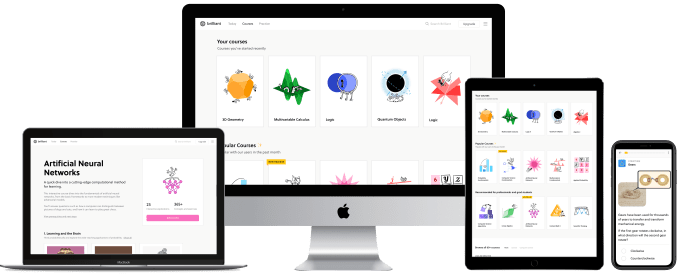
Product: Gift subscription coursesPrice: From $25 for one month Age: 13+
Description: If you don&t want to gift a learning toy, Brilliant.org has you covered with gift subscriptions for its STEM-focused digital courses (options include one month, or a full year). The philosophy behind its courses is to teach core concepts in math, science, and engineering through fun but challenging puzzles and problem solving — with the visual sweetener of surreal cartoony illustrations to keep you inspired.
The courses aren&t exclusively designed for children so may not suit every teen. But for children already firmly engaged with math and science thereplenty of mind-tickling stuff here to push logic and curiosity further.
GoldieBlox
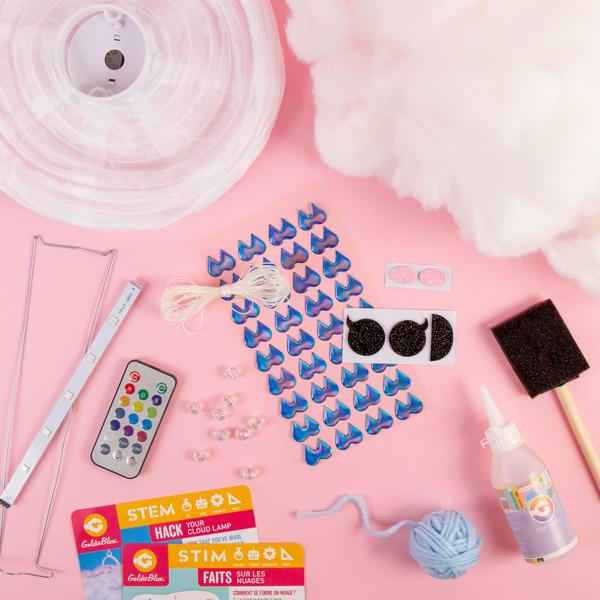
Product: DIY Floating Cloud LightPrice: $30 Age: 8+
Description:Slime-wrangling, glitter-bespeckled tween YouTuber (stuff) hackers, GoldieBlox, have put a crafty twist on STEM maker kits this year. The childrenmultimedia company has built up a maker following online for its DIY project videos. You can see them assemble this DIY cloud lightin this video — and gift it to your own budding hardware hacker in handy kit form. The box includes all the necessary parts to put the lamp together, plus a couple of cards offering STEM facts. Itpretty light touch learning, though. The main focus is clearly on fun and practical making. Glue and scissors at the ready!
Kano
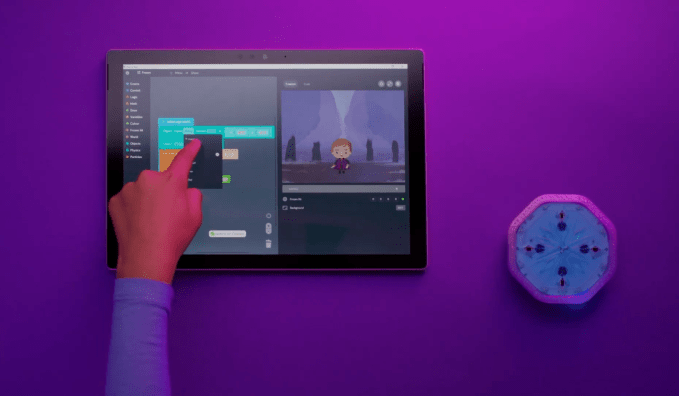
Product: Disney Frozen II Coding KitPrice: $80 Age: 6+
Description: UK startup Kano was one of the first in the modern wave of STEM device builders. It began with the idea of offering kids a build-it-yourself computer to learn coding, before expanding into brightly colored DIY IoT gizmos. More recently itgot into co-branded e-products. First a Harry Potter Coding Kit — offering a motion-sensitive wand as the interface between real-world gestures and on-screen code. Now itthrown its lot in with Disney, inking a two-year IP licensing deal. So enter the Disney Frozen II Coding Kit, new for 2019, which packages a build-it-yourself gesture-sensor with a Disney-flavored block-based coding bundle accessed via the companion app. Kids use hand gestures to manipulate cartoon versions of their favorite characters and Disney landscapes on screen. So the e-product requires a compatible tablet or computer to function.
For parents of youngsters who prefer Disneyother mega franchise, Star Wars, to Frozen‘s singing princesses and snowmen you only need point your peepers at KanoThe Force Coding Kit instead, which offers much the same experience — but in a sci-fi wrapper.
Product: Kano PC
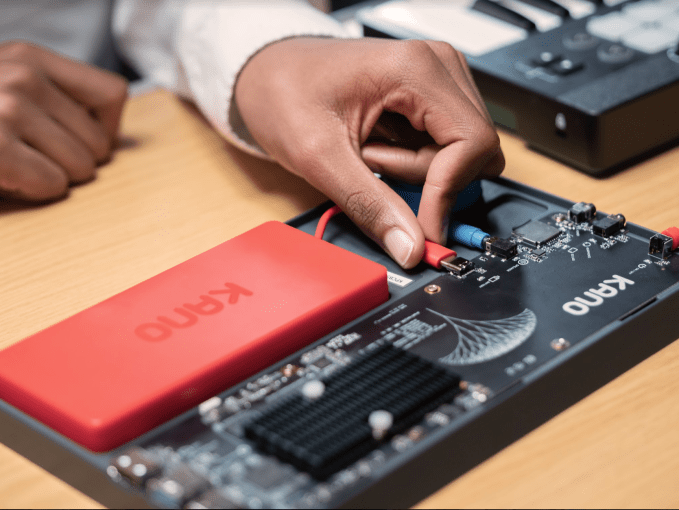
Price: $300 Age: K-12 (from 4+ to 19)
Description: Kano has more learn-to-code machinery to sell you this year. Itlatest DIY computer — the Kano PC — is a fully fledged Windows 10 computer. This is a radical departure from its alternative origins building atop the single-board Raspberry Pi. Now your Kano dollars get you an Intel Atom Quad core chipset running at 1.44 GHz powering a plug-and-play hardware bundle comprised of a touchscreen unit plus keyboard case. If the Microsoft Surface had a kid this would basically be it.
At this point, and at this price-point, you might be wondering why not just buy an actual Windows PC? To try to answer that Kano is touting &exclusive apps& of its own design that come pre-loaded on the device — offering guided learning in the areas of coding skills, programmable graphics and for understanding the inner workings of computers. The companyapproach to teaching coding runs the gamut from block-based drag-and-drop interfaces through to typed code, with projects offered in Python, Javascript and Terminal commands. Hence the Kano PC is targeted at a very broad age range. Though, as italso a Windows PC, you might find your kids just using it to play Minecraft instead…
KinderLab
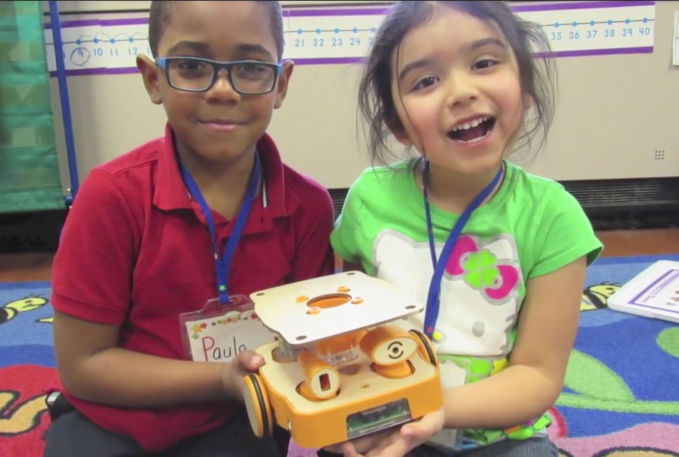
Product: KIBO robot kits Price: From $200 Age: 4-7
Description: KinderLab has been making screen-free programmable STEAM (that ‘A& is for arts) robotics kits since 2014 but the company is now making a wider push to get individual parents on board by selling its kits on Amazon. How does Kibo work? Kids play and learn by plugging a variety of proprietary sensors and outputs into ports on the wheeled bot. Such as motion and light sensors. Another add-on, which company calls an &art platform&, lets kids embellish and customize the robot by designing paper hats to stick on it to dress it in a new context or character. The coding element comes in via a built in barcode scanner thatused to read instructions off of physical wooden code blocks. This means kids can ‘program& the robot without using any screens at all.
KinderLabapproach to teaching foundational engineering design concepts began life as a publicly funded research project. The company says Kibo draws on 20 years of learning science (as well as several years of active prototype testing in classrooms) to firm up its educational value. The academic backstory means therea wealth of curriculum-aligned content accompanying Kibo. This definitely feels like one of the more substantial and thoughtful STEM products on the market. Italso great to see a product that leaves room for kids to introduce their own ideas.
Learning Resources
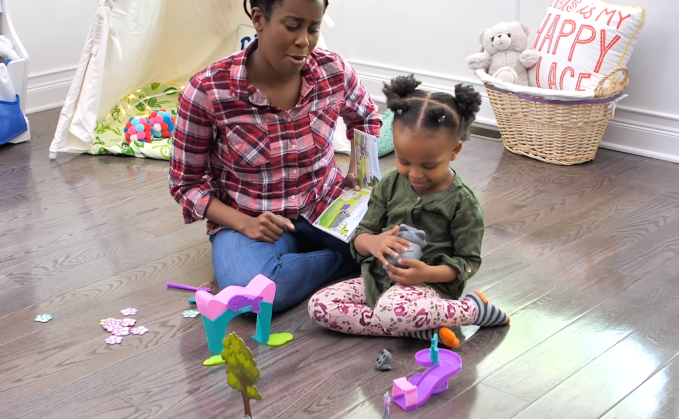
Product: Coding CrittersPrice: $40Age: 4-10
Description: Learning Resources has been teaching young kids to grok the basics of sequential coding since late 2017, with its Botley programmable robot. New in its range of STEM toys for 2019 are Coding Critters: Remote control programmable pets targeted at young preschoolers. The entirely screen-free approach to teaching basic STEM concepts combines button-based controls on the battery-powered animal characters, themed code cards for reference and a storybook for parents to play a role in the narrative.
LEGO
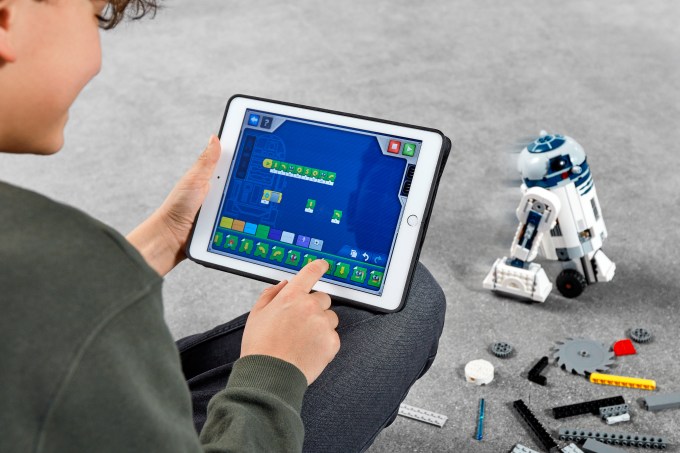
Product: Star Wars Boost Droid Commander set Price: $200 Age: 8+
Another one for Star Wars fans: This Lego Boost kit gives kids a bunch of Lego bricks and robot parts to put together three classic droids from the Disney-owned movie franchise. Boost being Legomore elementary robotics kit offering (vs the veteran Mindstorms platform). Once the Bluetooth-controlled droids have been assembled the companion app lets kids control and program them to carry out a series of missions, using a simple, block-based drag-and-drop coding interface.
Star Wars sound effects and music are included. But you&ll need to supply your own tablet to run the software. Or, well, you could just buy your kids a box of basic Lego bricks and let their imagination go wild.
Makeblock
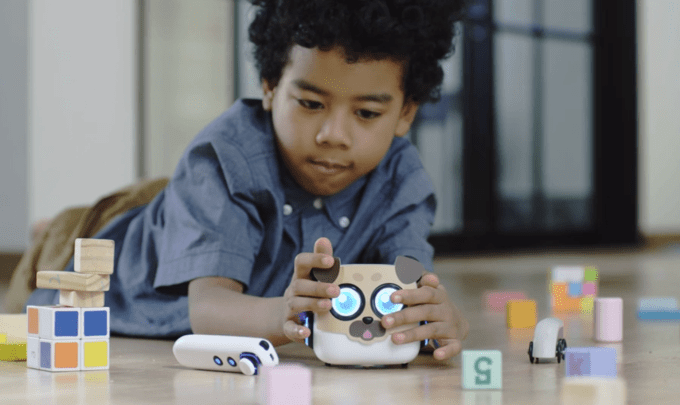
Product: mTiny
Price: $180 Age: 4+ Description: Shenzhen-based STEM kit maker, Makeblock, has unboxed a new cutesy learning robot for toddlers this year. Given the preschooler target thereno screens on mTiny (unless you count the botemotive, shape-shifting eyes). Instead the package includes coding cards, themed map pieces and a storybook for controlling and interacting with the sensor-laden bot. The company says the product is designed to foster logical thinking via interactive play. And its marketing materials make grand claims about exposing kids to a range of cross-curricular concepts, from math to art, as well as coding logic.
To control mTiny, kids use the companion tap pen. Either as a joystick, or to execute code-based programming — by tapping it on the code cards. The sequence of these cards determines its movements and actions. The bot can also read and respond to scenery markings on the themed floor tiles.
Mand Labs
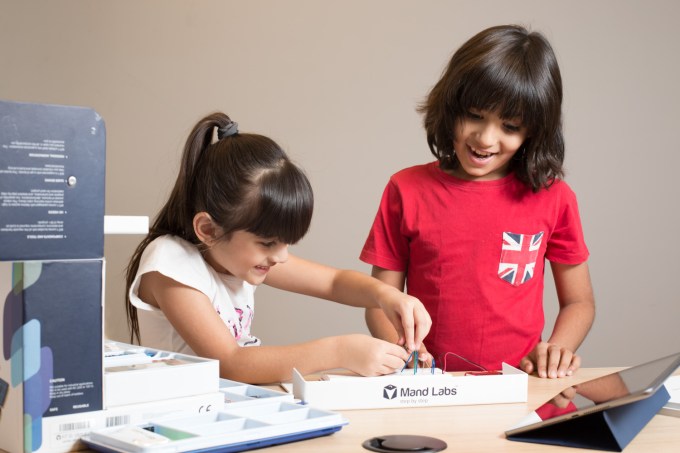
Produce: KIT-1Price: $150Age: 8+
Description: Budding engineers won&t be short of experiments if gifted this electronics breadboarding project kit from Mand Labs. Kit-1 contains 165 electronics components — the real-deal; not adapted for childplay — plus tools and reference books for carrying out 54+ projects and experiments. Step-by-step projects like building an automatic night lamp, a security alarm or temperature sensor. The kit is intended as an entry into electronics so kids build circuits on a breadboard, rather than messing around with soldering. The kit is housed in a toolbox-style carry-case so itportable enough to take to a friendhouse. The product also comes with nine-hours& worth of HD learning videos for extended learning support.
Pai Technology
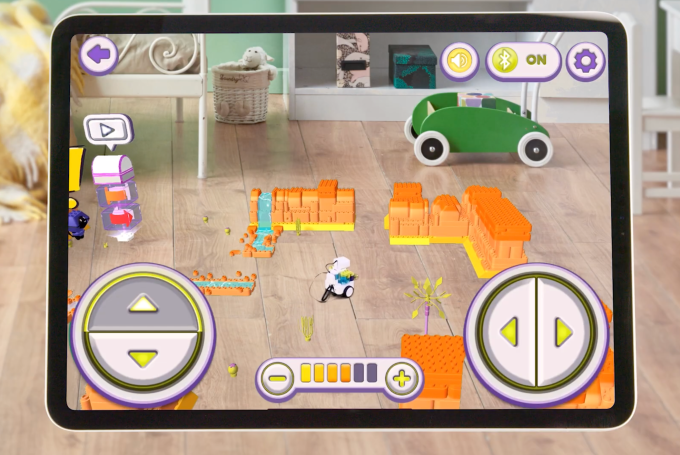
Product: Botzees Robotics KitPrice: $100 Age: 4+ Description:Pai Technology‘s range of STEM toys have an augmented reality twist. So as well as physical stuff to play with — block-based robots in this case — therea ‘code your own& virtual adventure element adding a digital dimension. New in its range for this year is the Botzees Robotics Kit. In the box are six sensor-laden programmable robots in press-together block form. They&re controlled via a companion app with a basic, block-based coding interface. The app also offers 30 interactive AR puzzles for blended real-and-virtual world play, which the company says help teach foundational coding concepts like sequencing, looping, and conditional coding. Although tor parents wanting to reduce kids& screen time the focus on AR probably won&t be welcomed as kids will need to be stuck in front of a tablet to get the most out of Botzees.
Raspberry Pi
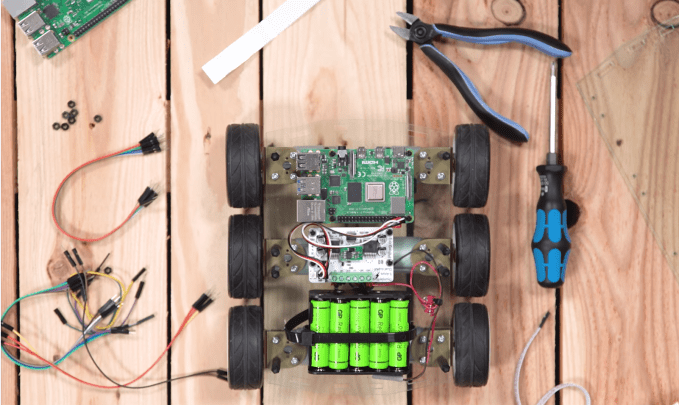
Product: Raspberry Pi 4 Model BPrice: $35Age: It depends
Description: The latest Raspberry Pi single board computer, the Pi 4, dials up memory, speed and power, packs plenty of ports and boasts onboard wireless networking and Bluetooth. For seasoned makers the possibilities really are endless. But for parents wanting to inspire kids to learn coding the Pi Foundation‘s philosophy may look daunting. Itnot one of lots of hand-holding out of the box. The theory is that hard challenge to required to really learn. That means if you buy Pi as is you&re getting the raw board, an OS to grapple with and an engaged community for learning support. It certainly won&t suit every child — but if you want to challenge a capable young mind thatalready showing a talent for digging into detail and figuring things out the Pi 4 is a low budget, high potential option vs the many more basic (but pricey) plug-and-play devices which have piled into the market since Pi arrived to shake up the microprocessor scene.
Sphero

Product: RVR Price: $250 Age: 5+ Description:Sphero is best know for its spherical remote-controlled robots but the company has this year branched out with a crowdsourced rover robot design called RVR. The more traditional four-wheeled design is sensor-packed and touted as an all terrain beast. The RVR can be driven (via app) right out of the box but has been designed for customization, with ports to accommodate third-party hardware — such as Raspberry Pi, Arduino, BBC micro:bit, or Spheroown littleBits. So itan extensible, hardware hackable, programmable robotics platform. On the software side, the Sphero Edu app offers a choice of coding styles to expand its educational potential — namely: Draw - Drive, Scratch Blocks and JavaScript.
Product: Specdrums
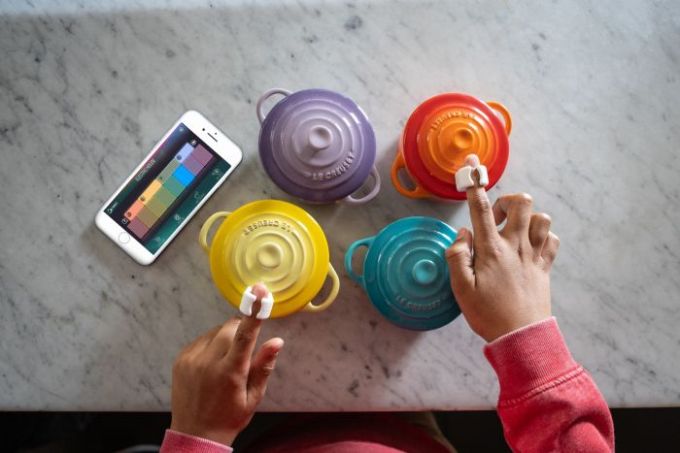
Price: From $65Age: 5+
Description: Musical edtech startup Specdrums is another Sphero acquisition. The premise behind its learning product is simple: Tap a color to make a sound. It achieves this with a wearable — a Bluetooth-connected, light-sensing ring (or pair of rings) — linked to its app. So itlearning to jam, rather than learning to code but with plenty of techie smarts. The Specdrums& Mix app offers musical loops and curated sound packs; playback and sound production tools; plus the ability to record your own samples. Aka everything a budding musician needs to tap out and mix impromptu beats, while looping in the real world as their musical playground.
Note the standard kit only contains one ring plus a colored playpad; for two rings the price steps up to $100. For the kit to work your child needs access to a smartphone or tablet to run the app and playback the music.
Ubtech

Product: JIMU Robot Mythical Series: FireBot KitPrice: $130Age: 8+
Description: Shenzhen-based Ubtech has been in the STEM robotics kit game for a number of years. New for 2019 is this motorized, LED-light-breathing dragon. As with previous kits in its brick-based JIMU series, the first step for the budding techie is to follow instructions and assemble their robot from all the constituent parts. Then the companion app offers a drag-and-drop code-block interface for programming FireBot and bringing its sensing powers to life.
- Details
- Category: Technology
Read more: Gift Guide: STEM toys for your builders-in-training
Write comment (95 Comments)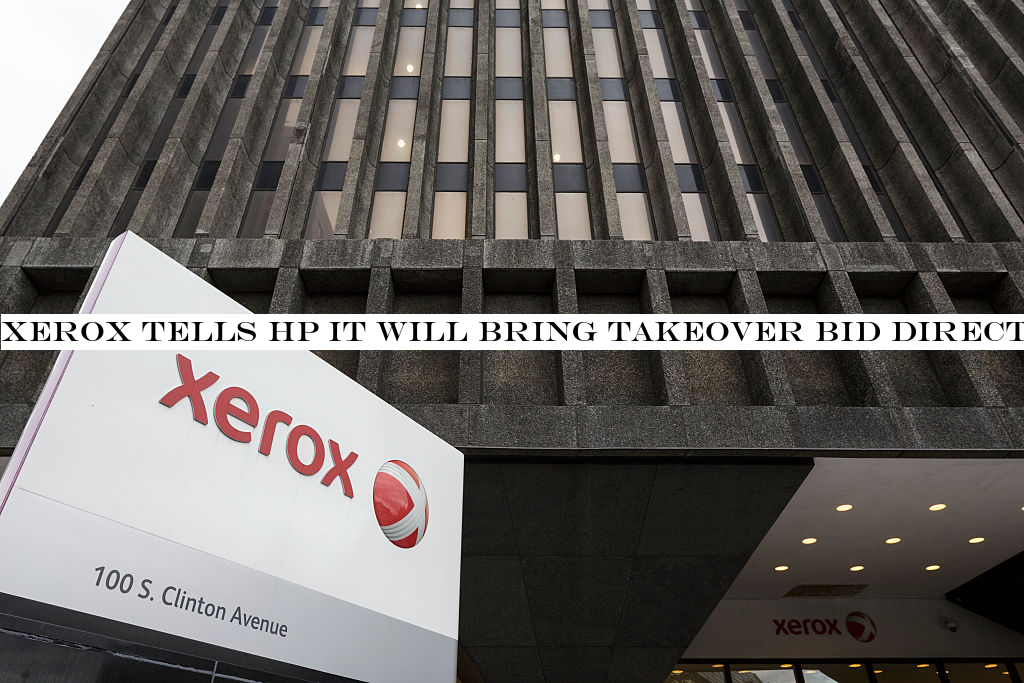
Xerox fired the latest volley in the Xerox -HP merger letter wars today. Xerox CEO John Visentin wrote to the HP board that his company planned to take its $33.5 billion offer directly to HP shareholders.
He began his letter with a tone befitting a hostile takeover attempt, stating that their refusal to negotiate defied logic. &We have put forth a compelling proposal & one that would allow HP shareholders to both realize immediate cash value and enjoy equal participation in the substantial upside expected to result from a combination. Our offer is neither ‘highly conditional& nor ‘uncertain& as you claim,& Visentin wrote in his letter.
He added, &We plan to engage directly with HP shareholders to solicit their support in urging the HP Board to do the right thing and pursue this compelling opportunity.&
The letter was in response to one yesterday from HP in which it turned down Xeroxlatest overture, stating that the deal seemed beyond Xeroxability to afford it. It called into question Xeroxcurrent financial situation, citing Xeroxown financial reports, and took exception to the way in which Xerox was courting the company.
&It is clear in your aggressive words and actions that Xerox is intent on forcing a potential combination on opportunistic terms and without providing adequate information,& the company wrote.
Visentin fired back in his letter, &While you may not appreciate our &aggressive& tactics, we will not apologize for them. The most efficient way to prove out the scope of this opportunity with certainty is through mutual due diligence, which you continue to refuse, and we are obligated to require.&
He further pulled no punches writing that he believes the deal is good for both companies and good for the shareholders. &The potential benefits of a combination between HP and Xerox are self-evident. Together, we could create an industry leader & with enhanced scale and best-in-class offerings across a complete product portfolio — that will be positioned to invest more in innovation and generate greater returns for shareholders.&
Patrick Moorhead, founder and principal analyst at Moor Insights - Strategies, thinks HP ultimately has the upper hand in this situation. &I feel like we have seen this movie before when Carl Icahn meddled with Dell in a similar way. Xerox is a third of the size HP Inc., has been steadily declining in revenue, is running out of options, and needs HP more than HP needs it.&
It would seem Xerox has chosen a no-holds barred approach to the situation. The pen is now in HPhands as we await the next letter and see how the printing giant intends to respond to the latest missive from Xerox.
- Details
- Category: Technology
Read more: Xerox tells HP it will bring takeover bid directly to shareholders
Write comment (95 Comments)Virtual reality doesn&t have many hit games yet, but Facebook is buying the studio behind one of the platformbiggest titles.
Facebook announced today that it will be buying Beat Games, the game studio behind Beat Saber, a rhythm game thatequal parts Fruit Ninja and Guitar Hero — with light sabers of course.
Terms of the deal weren&t disclosed, but we&re sniffing around for a price tag.The studio will join Oculus Studios but will continue to operate independently at their HQ in Prague.
This is an interesting direction change for Oculus, which has spent much of the past four years refining how it grows the content ecosystem for its virtual reality headsets.
Initially, the company produced some of the content in-house while dumping hundreds of millions of dollars into tons of exclusives from indie studios that were interested in playing around with the VR medium. In the past couple years therebeen a new direction change as the company has funneled more money into fewer high-profile studios, trying to court big titles to the Oculus platform.
Buying Beat Games and bringing it into the fold of Oculus Studios suggest Facebook may be interested in following the strategies Microsoft and Sony have employed as they&ve bought up small studios and funded new titles. One thing Facebook is claiming they aren&t after is platform exclusivity, saying Beat Games will continue to support the platforms that they are already on.
So, whatin all of this for Facebook then?
Beat Games was one of the more successful VR game studios out there — they had announced earlier this year that they had sold more than 1 million copies of the game — but part of the reason they were prosperous was because they were so lean. When I profiled the studio last year, they had just 8 employees and had opted out of raising any VC funding.
Meanwhile, as VRmost popular game, Facebook had a bit riding on their continued success. Facebook highlighted the studiosuccess specifically at its its VR developer conference and had included a limited version of the studiogame for free on its Oculus Quest headsets. Buying the studio means allowing them to expand ambitions without being concerned about profitability.
Beat Games had begun expansion by partnering with musicians to release their songs as levels in the game, partnering with artists like Imagine Dragons and Panic at the Disco to bring paid level packs to Beat Saber. One can imagine that Facebook will have a much easier time making conversations happen with top artists.
One thing that die-hard fans of the game will likely not enjoy is how this acquisition will impact user mods. The studio had introduced tools for users to create their own songs with uploaded audio files and unsurprisingly therea good deal of content thatprobably not supposed to be on there. With a small game studio that stuff was more likely to slide, but Facebook has the resources to crack down on it so I&m guessing they&ll have to.
In a blog post, the company acknowledged as much, &We understand and appreciate the value that modding brings toBeat Saberwhen done so legally and within our policies. We&re going to do our best to preserve the value that mods bring to theBeat Saber player base.&
Exiting to Facebook is one of the few ideal M-A outcomes in mind for investors that are looking to back a consumer VR startup. Beat Games got there without any venture backing. I profiled Beat Games this summerand spoke with co-founder Jaroslav Beck about his desire to keep the team small and his concerns about survival.
- Details
- Category: Technology
Read more: Facebook buys VR studio behind Beat Saber
Write comment (95 Comments)Those who&ve attempted to snag their preferred Twitter handle know what a pain the process can be. Users can squat on an account for years, holding onto handles in spite of long stretches of inactivity. As spotted by a BBC reporter, a new move by the company could help alleviate the situation.
The service confirmed the move in an email to TechCrunch:
As part of our commitment to serve the public conversation, we&re working to clean up inactive accounts to present more accurate, credible information people can trust across Twitter. Part of this effort is encouraging people to actively log-in and use Twitter when they register an account, as stated in our Inactive Accounts Policy. We have begun proactive outreach to many accounts who have not logged into Twitter in over six months to inform them that their accounts may be permanently removed due to prolonged inactivity.
As noted, the service has an inactive account policy in place, though it traditionally hasn&t done much to enforce it. The company encourages users to, at the very least, log in and tweet every six months. Now ittaking the added measure of reaching out to inactive users, prompting them to log in prior to December 11, or risk being deleted.
As for the timeline of opening up those accounts, Twitternot saying. And the fine print on the inactive account policy page still notes that the service does not &generally accept requests for usernames that seem inactive,& short of perceived trademark infringement. A spokesperson noted in an email to TechCrunch that the accounts &may& become available, though the process of removing old accounts will likely take a number of months.
Update: Twitter wrote back to clarify that freeing up handles is a &byproduct& of its work to &present more accurate, credible information,& rather than the primary goal of the move.
- Details
- Category: Technology
Read more: Twitter will free up handles by deleting inactive accounts
Write comment (91 Comments)
It was the challenge heard around the electric vehicle world. And now it seems, the Ford F-150 versus Tesla Cybertruck tow battle that we were all ready for, probably won&t happen.
A quick recap: Tesla CEO Elon Musk poked the figurative Dearborn, Michigan bear in the middle of the companyCybertruck unveiling when he played a video of the futuristic electric truck pulling an F-150 in what was pitched as a head-to-head contest.
Many were quick to question whether it was a fair fight, including astrophysicist and author Neil deGrasse Tyson. But what really got Muskattention was a tweet from Sundeep Madra, VP of Ford X, the automakerventure incubator.
Madra tweeted to Musk challenging the CEO to send Ford a Cybertruck to do an &apples to apples& test. Musk, who is well versed in the Twitter troll, responded with a &bring it on.&
It seems Madratweet wasn&t meant to be a serious challenge, but a &tongue in cheek& troll, according to Ford.
&Sunnytweet was tongue in cheek to point out the absurdity of Teslavideo, nothing more,& a Ford spokesperson said in an email to TechCrunch. &With Americabest-selling truck for 42 years, we&ve always focused on serving our truck customers regardless of what others say or do. We look forward to our all-new F-150 hybrid coming next year and all-electric F-150 in a few years.&
Perhaps, Ford will change its mind. But for now, the tow battle rematch will be left to Tesla.
- Details
- Category: Technology
Read more: Ford says it has nothing to prove to Tesla in F-150 vs Cybertruck tow battle
Write comment (98 Comments)Google is hoping to juice holiday sales of Chromebooks by tacking on a subscription to the hot new streaming service, Disney+. The company on Monday announced it would give Chromebook buyers three, free months of Disney+ with the purchase of new devices.
Specifically, the deal is valid for Chromebooks bought between November 25, 2019 and January 21, 2020, or while supplies last. And the free streaming offer has to be redeemed by January 31, 2020, Google tells us.
Customers will need to redeem the offer by way of the Chromebooks Offers Site, where they&ll receive a promo code. After downloading the Disney+ app from the Play Store on their Chromebook, users will then create an account, accept the Disney+ Subscriber Agreement, then click &Redeem Code& at checkout.
Note that you&re agreeing to an ongoing subscription here — if you only want the three, free months, you&ll need to cancel before the subscription auto-renews.
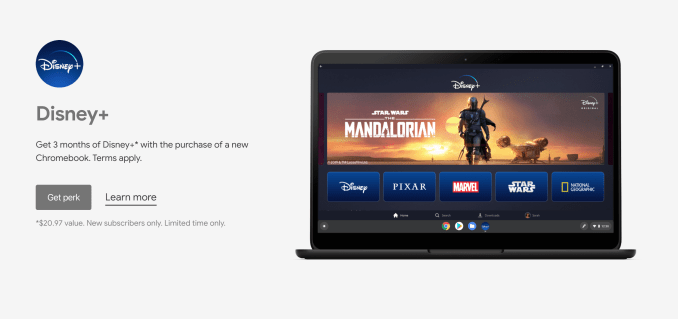
The promotion isn&t just a nice perk for Chromebook owners, however.
Marketing partnerships like this are helping Disney quickly get its new streaming service into customers& hands. And giveaway deals like this also helps consumers to get over their initial hesitation about adding on yet another subscription to their monthly expenses. For now, itfree. And Disney, of course, hopes you&ll forget to cancel later on and start paying — or see the value in the subscription after the free period ends.
This isn&t the first big promo for Disney+ following its debut. Disney already partnered with (TechCrunch parent) Verizon on a broader deal, which gave new and existing Verizon Wireless customers on unlimited plans a full year of Disney+ for free.
These partnerships are already paying off.
Disney said it signed up 10 million customers for Disney+ within the first day of its broad international launch. Thatmore than other streamers — including CBS All Access + Showtime, ESPN+, HBO NOW, and others — have signed up in their entirety, noted CNBC at the time.
According to new figures from Apptopia, the Disney+ app has been downloaded 15.5 million times since its launch earlier this month — meaning itbeenaveraging around 1 million sign-ups per day. The firm estimated it had generated $5 million through in-app purchases, after app store fees are paid. A separate analysis from Sensor Tower puts figures much higher — 19.8 million installs, and $24.2 million on in-app purchases during the same period.
Google is selling a wide range of Chromebooks on its site ahead of the holidays, starting with sub-$200 basic models, all the way up to its high-end Pixelbook at $999. Itworth noting that only new Chromebooks qualify for the Disney+ deal — if you&re picking up a refurb or buying used from an online classified ad, you&re out of luck.
Disney+ is $6.99 per month when the promo ends.
- Details
- Category: Technology
Read more: Google is giving away 3 months of Disney+ to new Chromebook owners
Write comment (99 Comments)Page 250 of 5614

 14
14